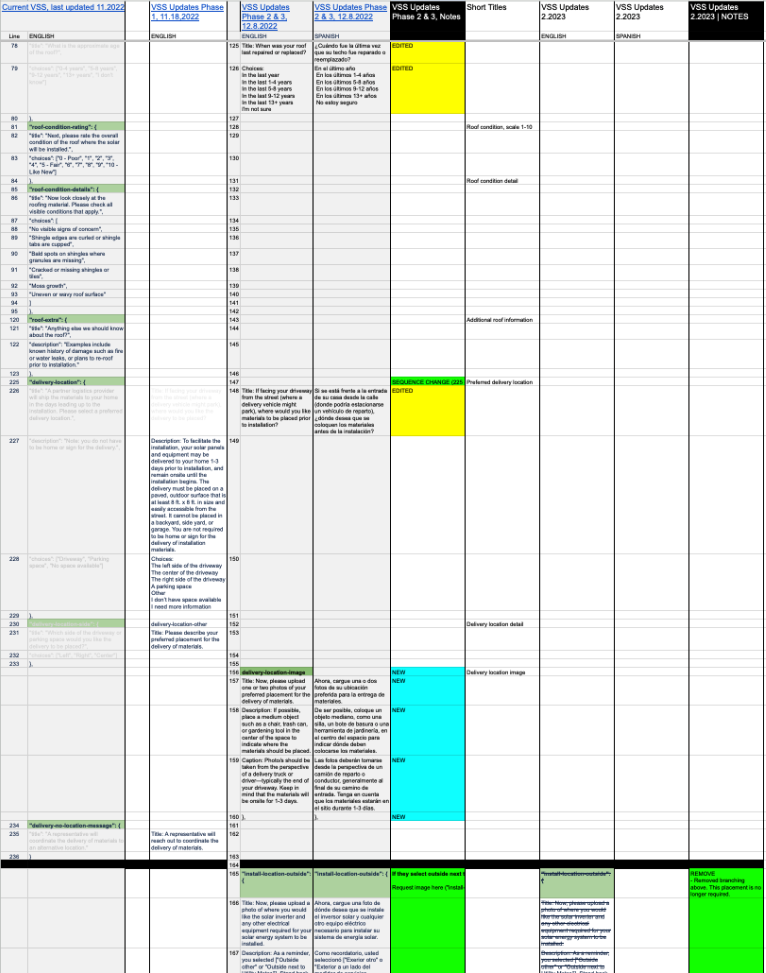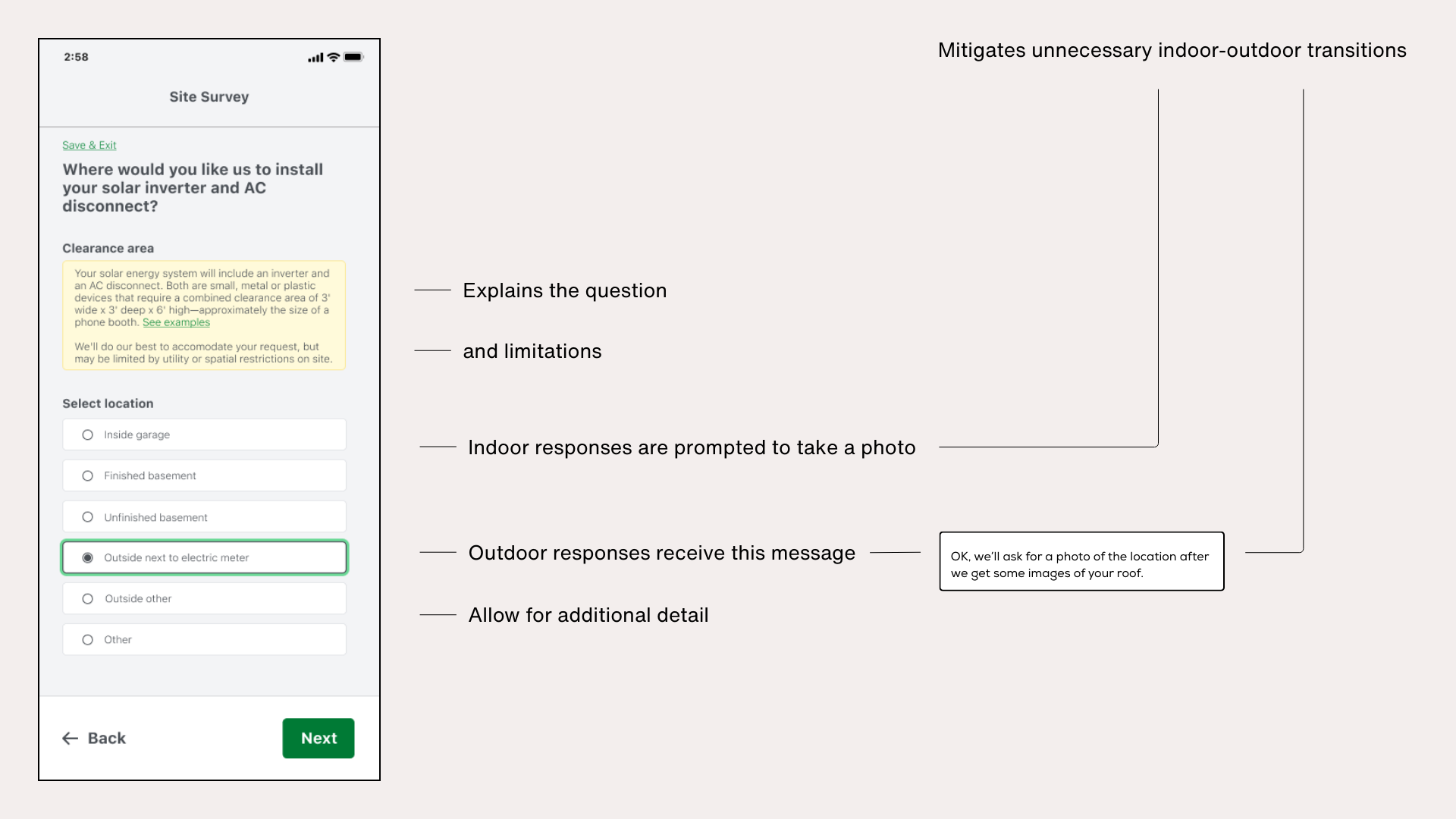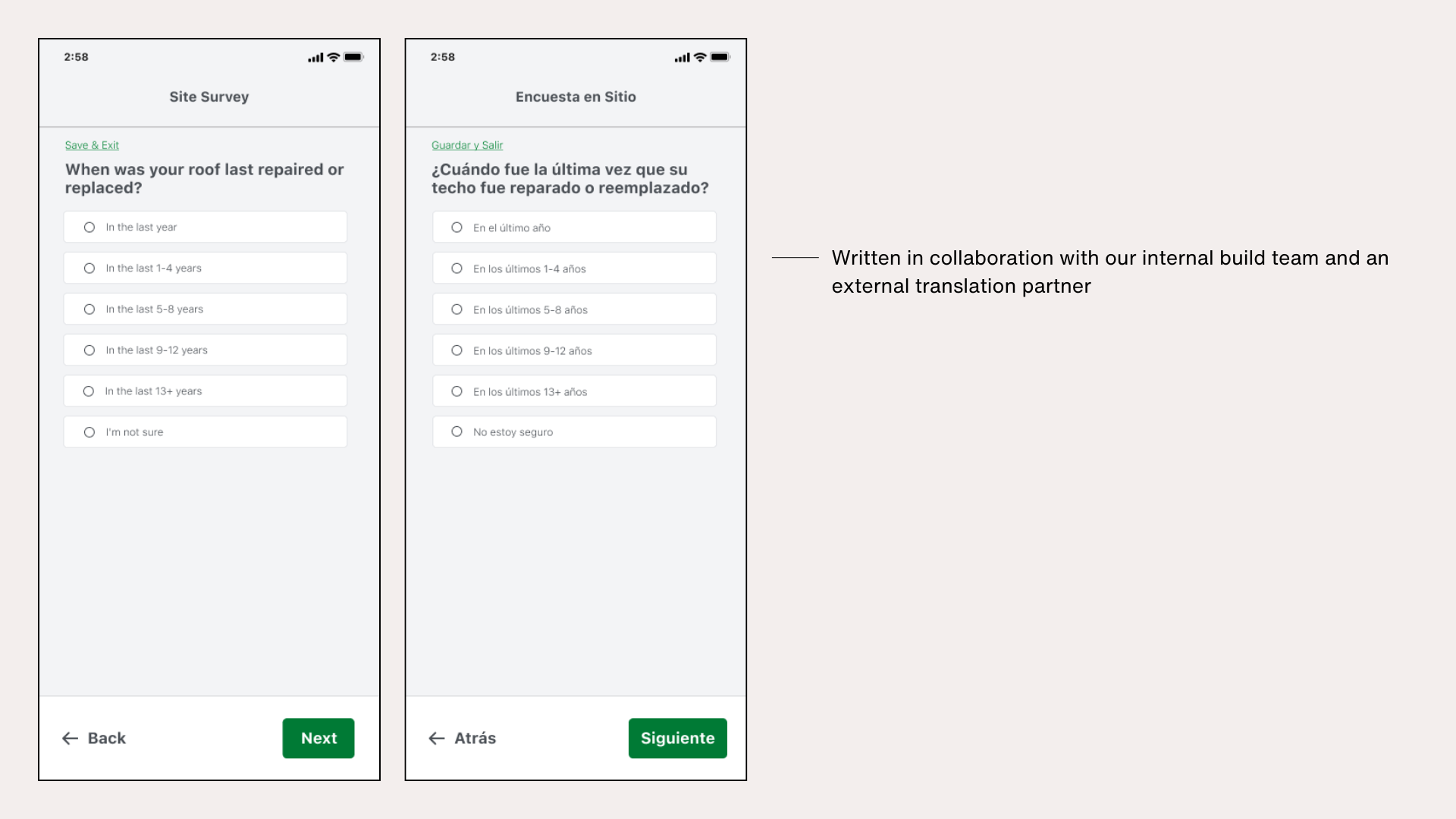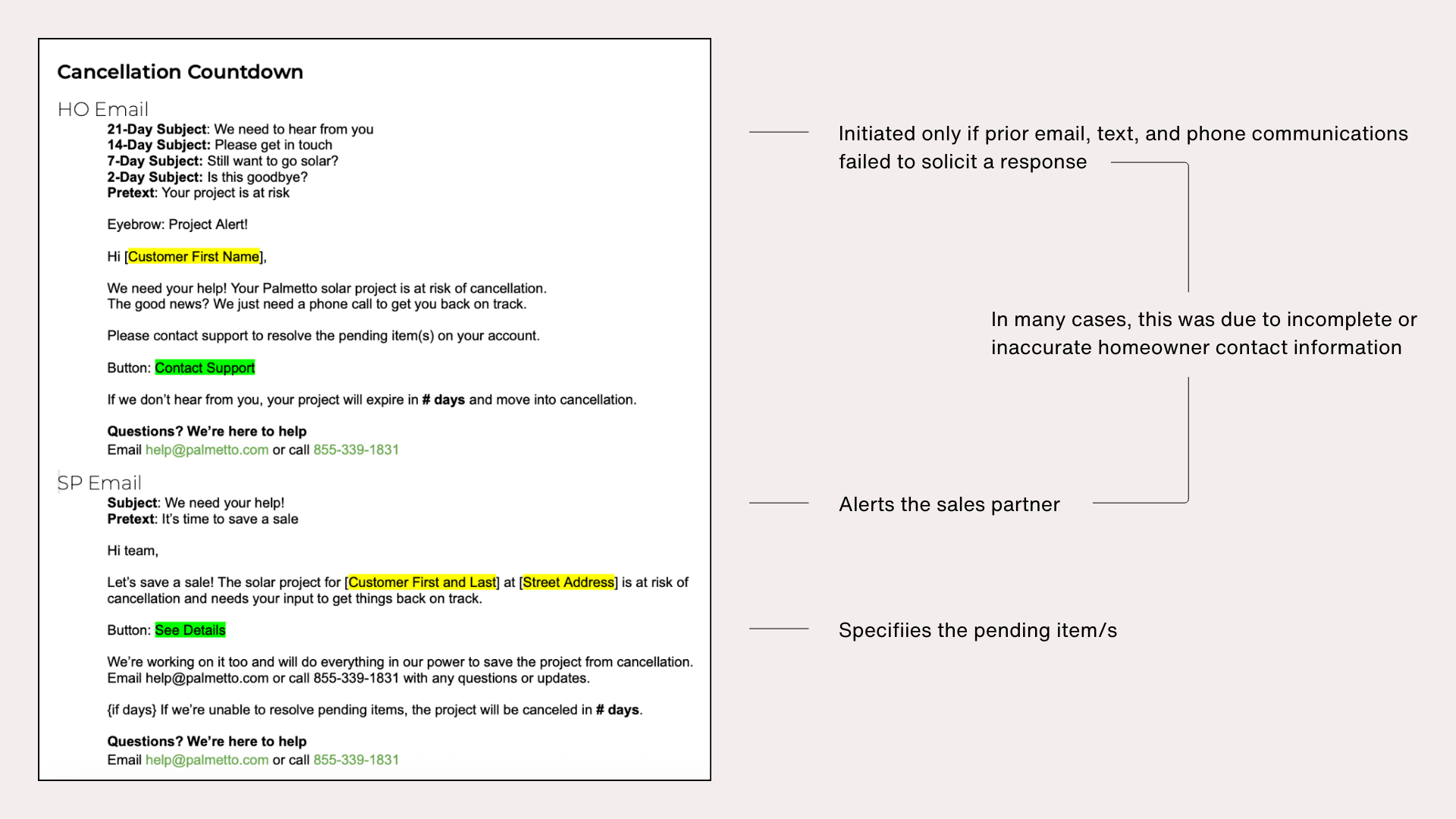CASE STUDY • Projects • UX Research • Content Design
Palmetto virtual site survey (VSS)
In 2021, Palmetto launched a virtual site survey to support online sales and fulfillment for custom residential solar. The survey guided customers through a series of prompts to collect crucial information about their homes.
The goal was to reduce unnecessary costs by eliminating the need for an on-site solar survey. However, completion rates were low and often lacked the detail required, resulting in delays, errors, and frustration for teams and customers.
ROLE
UX Research • Content Design
COMPANY
Palmetto
TEAMS
Product • Fulfillment • UX Design • Customer Experience • Marketing
YEARS
2021-2023
CHALLENGE //
To replace the on-site survey, we needed better results.
OPPORTUNITY //
The VSS offered new ways to engage with and learn from our customers.
If successful, it could reduce solar costs and unlock valuable insights to enhance the customer journey.
Palmetto’s end-to-end solar energy solutions help you plug into savings with less time and no hassle.
Marketing copy written by Trystin Sova
CONTEXT //
In August 2020, Palmetto closed Series B funding with a $29M raise intended to accelerate tech enablements across product and service offerings.
Our teams were resourced, growing, and busy as we developed products and features for a digital platform experience.
APPROACH //
Research. Iterate. Repeat.
We needed to understand why completion rates were low, where to focus our efforts, and how to deliver an experience that customers could easily use.
We were also in early-stage growth, with competing priorities, tech limitations, API roadblocks, and the like. Our approach would be iterative and research-focused, allowing us to integrate learnings as our understanding of the problem space evolved.
DISCOVERY //
Content Audit
Provisional guidelines and updates
-
The existing content lived in an online survey platform.
It had been pieced together by our build partner team, who oversaw the design, permitting, and installation process.
-
To begin, I inventoried all UI content, including headers, titles, descriptions, labels, buttons, and error messages.
Text patterns and formats were varied, creating a disjointed user experience.
-
Before editing the content, I outlined guidelines and best practices, specifying the capitalization, length, format, and function for each UI component.
Our voice would be friendly, helpful, and concise—empowering customers with clear information and expectations. -
Edited all content per new UI guidelines
Introduced a friendly, expectation-setting intro
Applied conditional logic to avoid non-applicable questions
Revised confirmation screen with next-step details
MIGRATION //
Once initial updates were complete, we migrated the content from SurveyMonkey to our central GitHub repository.
The migration enabled greater UI flexibility and control, better integration with our website and platform experience, and richer data insights.
→
SurveyMonkey logo
GitHub logo
RESEARCH // GOALS
Research and diagnose problems
Decide where to focus our efforts
RESEARCH // PLANNING
This required a tactical, cross-functional approach within a remote tech environment.
We began by mapping the ecosystem of the problem space—outlining questions, methods, and stakeholders to include in our research process.
Initial list of questions to ask and stakeholders to connect with for relevant data and insights
RESEARCH // QUESTIONS
How are folks entering and engaging with the VSS?
Where and why are folks getting stuck?
Can we identify any patterns in completion or drop-out rates?
How are accuracy and completeness defined?
What are the primary causes for kickbacks and cancellations?
How does this fit into the larger customer experience?
What is the cost to the company? To the customer?
What data do we have available?
What initiatives have other teams tried?
What are our technical capabilities and limitations?
How are we messaging the product?
RESEARCH // METHODS
-
Stakeholder interviews
Met with teams across the company to collect data, gather insights, and align on objectives for the project
-
Customer field studies
Scheduled virtual, moderated field studies to observe and learn from customers as they engaged with the VSS
-
Desk research
Reviewed existing data and reports to analyze behaviors, define pain points, and further quantify the problem
-
Contextual mapping
Developed a customer journey map and service blueprint to clarify the broader scope of customer/business interactions
-
Funnel analysis
Analyzed the sales and fulfillment funnel to measure patterns in completion rates and quantify the cost to the company
-
Usability audit
Conducted a usability audit and heuristic analysis to uncover opportunities for design and content improvements
RESEARCH // FINDINGS
CONTENT // MANAGEMENT
To facilitate and manage updates, I create a central repository of all VSS content, pulling the data and location directly from GitHub into a shareable spreadsheet. The repository allowed us to:
Collaborate on edits and translations
Collect feedback from stakeholders and SMEs
Solicit and manage approvals
Ensure consistency across all UI content
Streamline processes across product, content, and engineering
Track versions and test updates
Screenshot of the VSS content repository: Yellow indicates an edit, blue indicates new content, and green indicates a change in sequence or branching
CONTENT // STRATEGY
I also explored gaps and opportunities in the broader customer journey, including the website, consumer app, support center, onboarding flow, and transactional communications.
USABILITY // UPDATES
We created a consistent content design with actionable microcopy and in-product education to make the process easier, more intuitive, and more engaging for Palmetto homeowners.
Note: Many of the images below are low-fidelity Figma or Canva recreations intended to illustrate key aspects of the content updates, not the visual design.
IMPACT //
Over the course of 2022 and 2023, we improved both completion rates and submission quality for the Palmetto virtual site survey.
New communications, onboarding, and support content reduced the average time between trigger and completion: Customers were acting faster.
As one of the first self-service features in the sales and installation process, VSS updates helped orient customers to the broader customer journey and empower them to rely on and engage with the Palmetto solar app.
The downstream effects included an increase in clean sales, a decrease in project delays, faster installations, fewer cancellations, and relief for internal teams.
In January 2023, Palmetto reported that “platform enhancements resulted in residential solar systems getting installed 37 days faster than previous averages” while “change orders and cancellations declined by 5%” (Solar Builder, 2023).
“By making solar adoption as easy and seamless as buying a new home appliance, Palmetto is uniquely positioned to accelerate clean energy adoption at a time when the world needs it most. We are enabling sellers to do what they do best – lead generation and selling products – while Palmetto handles the rest.”
—Chris Kemper, CEO and Founder of Palmetto, in Solar Builder 2023: ‘Early results of Palmetto's new platform show speedier solar sales, install cycle’













